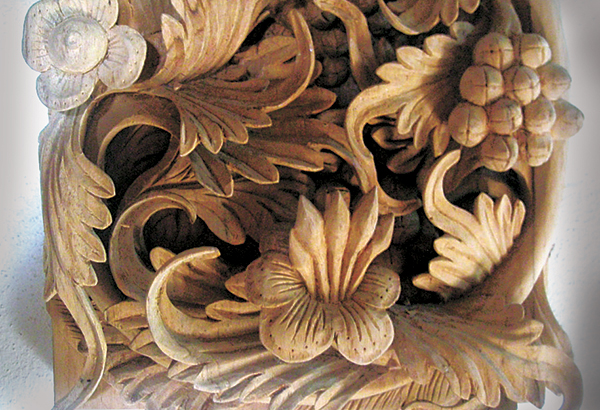
Nopradol Khamlae is a seasoned woodcarver living in northern Thailand and trained in the local “Lanna” carving tradition, arguably amongst the world’s most intricate and spectacular styles.
Nopradol has been carving in the Lanna style for over 35 years, the skills having been passed down in his family. The tradition owes much to carver monks producing devotional works for Buddhist temples. A stunning example, Wat Bupparam, in the center of Chiangmai has doors and window shutters of thick polished teak relief carved with scenes from Buddhist scripture, much of it epic in scale and detail. The abundant, fertile nature of the Thai countryside is background to the work, especially the succulent and sacred Bhodi Tree under which Buddha is said to have gained enlightenment.
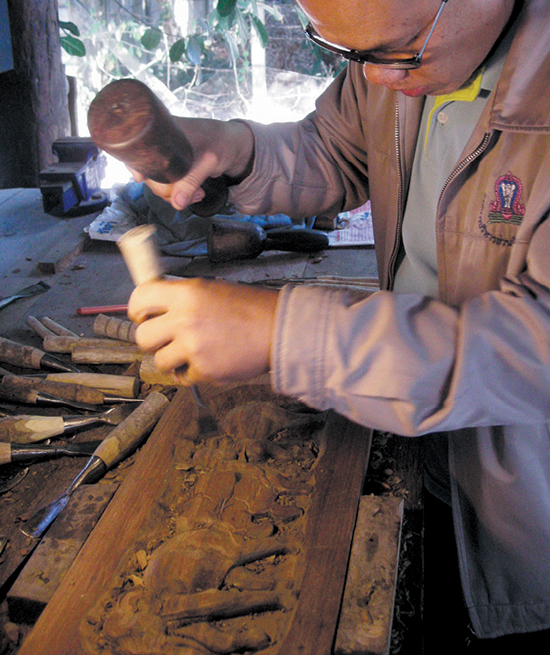
The hill country around the city of Chiangmai in northern Thailand was once the King- dom of Lanna. It was rich in teak, one of the world’s great durable timbers: once used for ocean-going sailing ships, teak can also be carved into details the thickness of a leaf.
With this legacy, the region evolved into a woodworking culture and became the workbench of the nation.
Nowadays, hardwood furniture, much of it fine quality and design, is produced throughout the area. Carvings are made in industrial quantities in the city of Chiangmai, but in the rural areas surrounding Baan Tawai are small workshops where the craft is raised to a higher level.
It’s in this area where Nopradol has his home and workshop. He does have the ability to work in other styles, including Western heraldic images, and he sometimes works on major overseas com- missions. A statue he made of the Buddha, in European oak, stands three meters high in the Thai Sala area of the Westpark in Munich, Germany. Nopra- dol has published a book on his work and runs residential training sessions, like the one I took, in a workshop school next to his home in Baan Tawai.
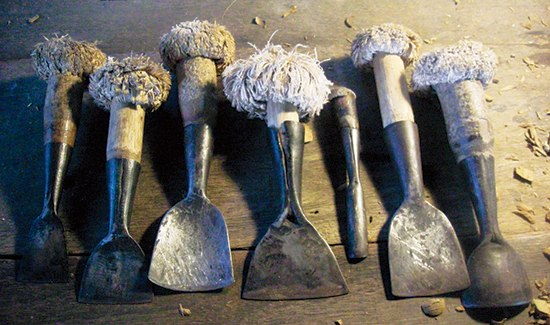
Some of his Lanna style pieces are nailed casually to the posts of the workshop. The tools he, like other Lanna carvers, uses are pre-industrial: black- smith-made from reclaimed railway line or car springs. The handles are crude sticks from a local shrub selected because it doesn’t split. The gouges are not made in precise dimensions and are, curiously, beveled on both faces.
In recent years, a new generation of carvers has taken up the Lanna tradition and are producing large-scale, ambitious works. Religious themes endure along with a panoply of dragons and hybrid spirit creatures. The greater focus, however, is on the stylized imagery of nature.
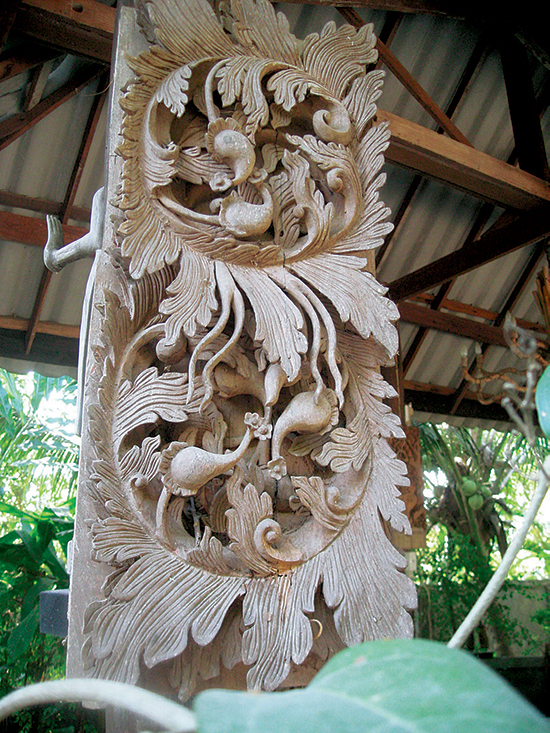
These works are on display in the markets of Baan Tawai, where high quality carvings are marketed to tourists. You’ll also find galleries of extraordinary work in the area; photography is banned in these areas due to the possibility of image theft.
Some pieces take up to two years to carve. There are carvings into big tree bases or giant slabs of laminated through-sawn teak portraying jungles covered in creepers with leaves and petals a millimeter thick, undercut in deep layering, creating worlds you could almost walk into. The fragility is awe-inspiring. How these pieces are created without breakage defies the imagination, as does the question of how the pieces are moved. Shipping costs are astronomical — possibly why such work is rarely seen outside of the Kingdom.
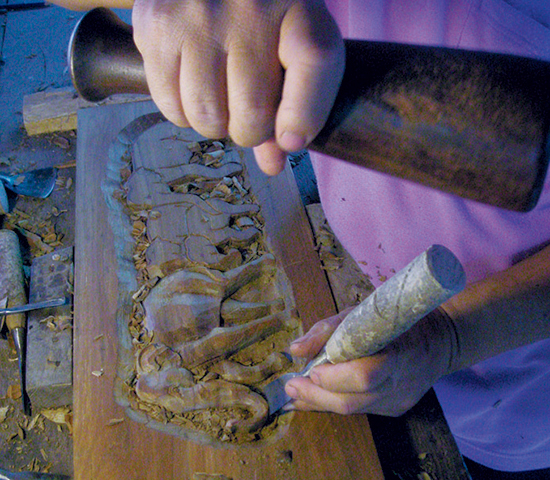
Overall, however, the Thai carving market thrives. They export everything from small ornaments to hefty laminated plaques of carved teak the size of a house. In Thailand itself, public buildings are richly embellished with sculpture, traditional teak houses are ornamented with hand-carved features, and Buddhist temples are festooned with works of wooden art. In Thailand, they even carve their vegetables for special occasions!
If you think you are an advanced enough carver to benefit from this insight into Lanna style, you can find out more about Nopradol’s workshops or call the Thai location at +66 (0) 816037306.





